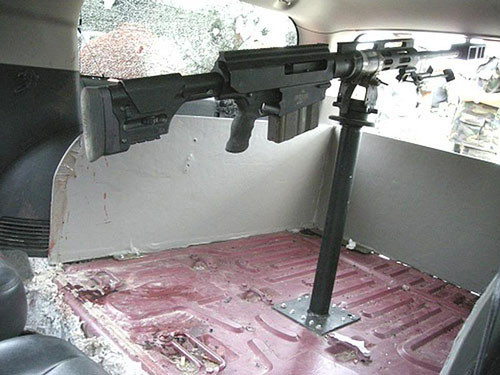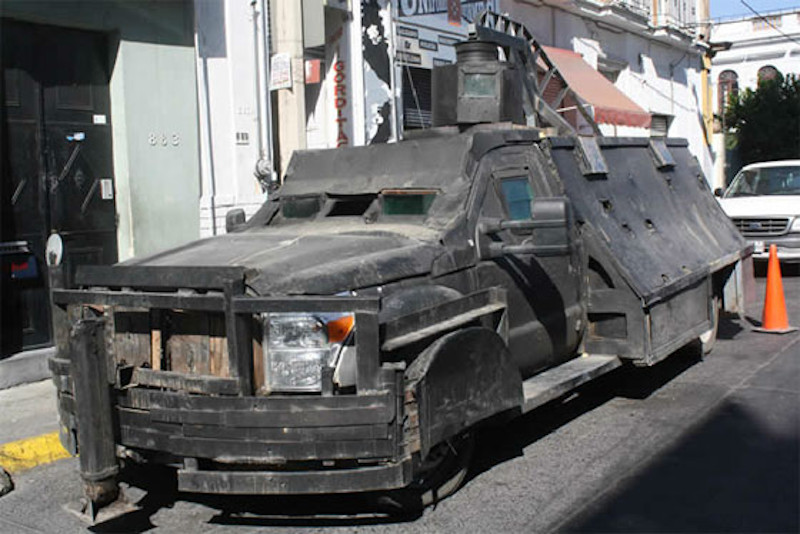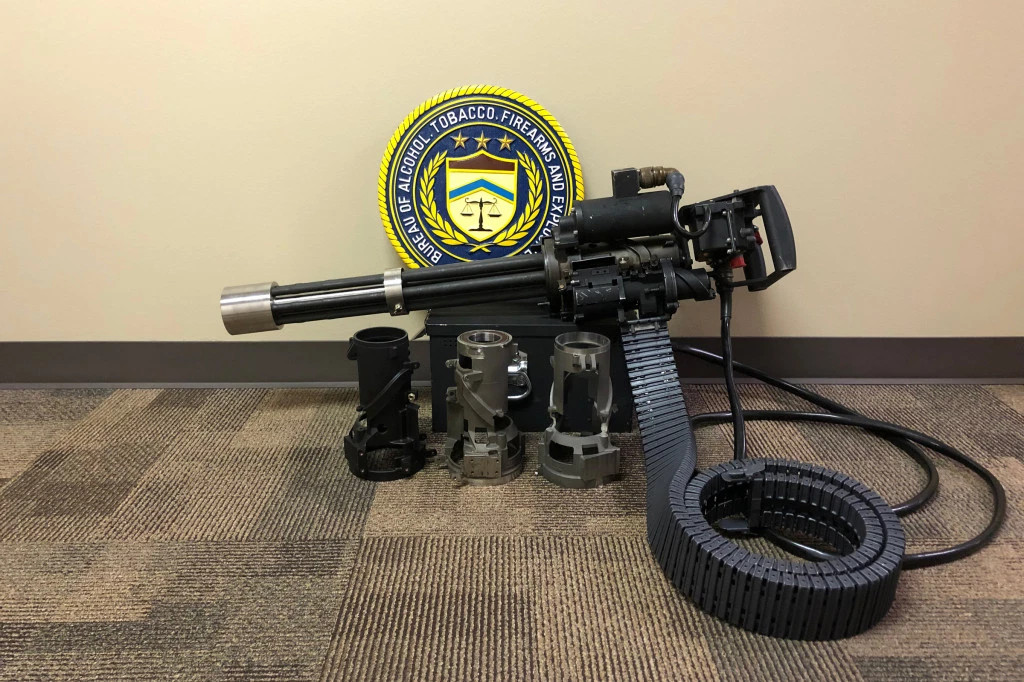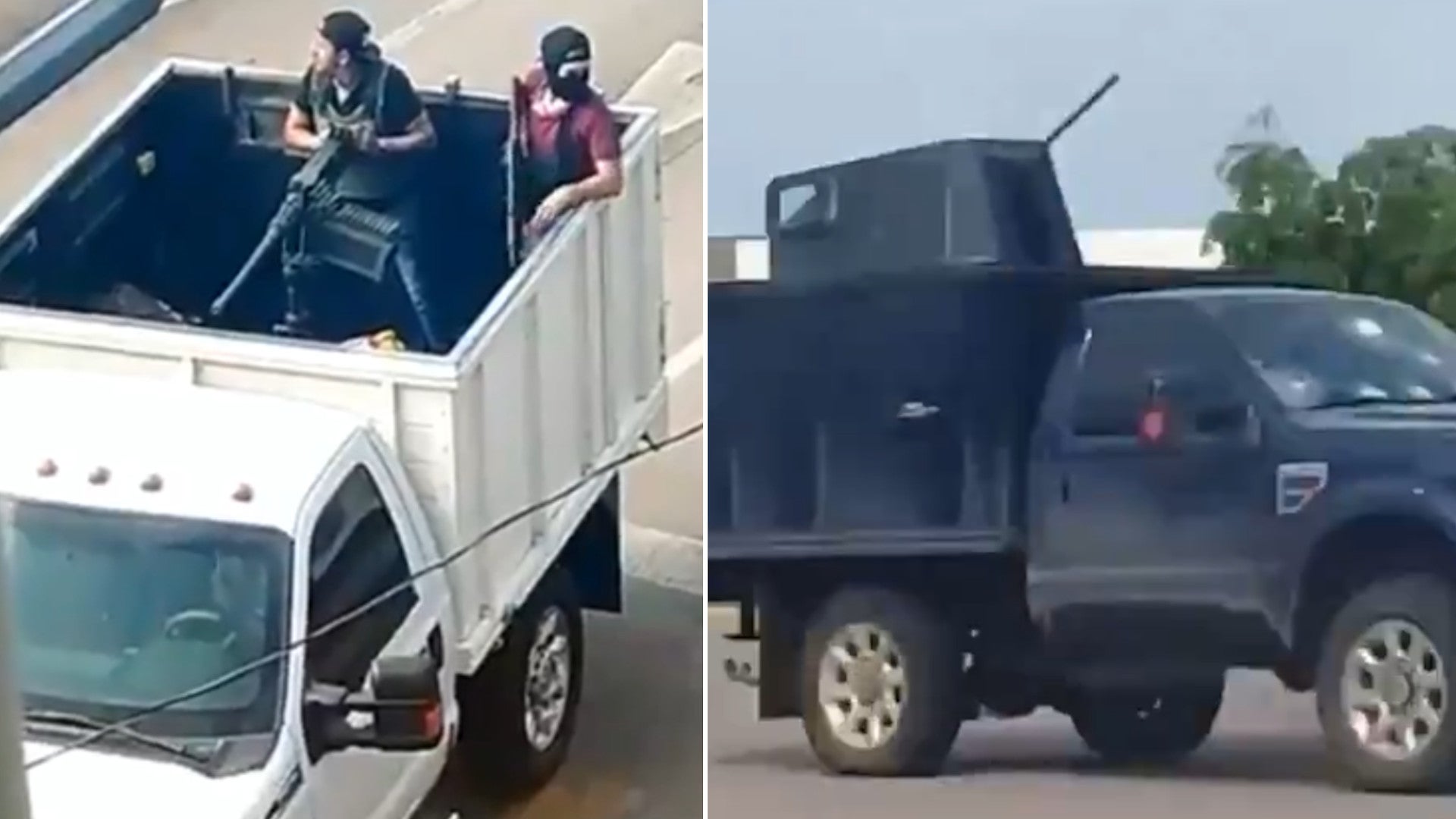A bungled police operation in Mexico yesterday briefly led to the detention of Ovidio Guzmán López, a son of Joaquin “El Chapo” Guzmán, the infamous former leader of the Sinaloa Cartel who is now in prison in the United States. Mexican security personnel eventually turned him over to cartel gunmen after the arrest prompted a raging gun battle with extremely heavily armed fighters, including some with American-made Barrett .50 caliber anti-materiel rifles and others riding in gun trucks packing .50 caliber M2 machine guns, the latter of which have become a fixture in Mexico’s drug war over the past decade.
Mexican National Guard troops and police personnel launched the operation in Culiacán, the capital of Mexico’s Sinaloa State, on Oct. 17, 2019. Culiacán, and Sinaloa broadly, which sits on the Pacific Ocean, has long been a major stronghold of the Sinaloa Cartel and is where it takes its name from. The Mexican government appears to have hoped that the operation would be discreet and quick. After the fighting began, Mexican Security Minister Alfonso Durazo issued an initial statement claiming that security forces had simply been on a routine patrol in the area when they began taking fire from a house and subsequently found Ovidio inside. It has since emerged that this was a pre-planned mission.
The elder Guzmán is presently serving a life sentence at the ADX Florence maximum security prison in Colorado after a U.S. court convicted him of various charges in February 2019. The same month the U.S. Justice Department unsealed indictments against Ovidio, as well as another one of his other brothers, Joaquín Guzmán López.
The operation against Ovidio was part of the U.S.-Mexican efforts to detain both of them and send them to the United States to stand trial. However, it appears that everything that could go wrong with the Mexican operation did.

The task force reportedly received orders to wait after arriving very publicly at the compound where Ovidio was staying after receiving word that authorities had not actually secured an arrest warrant, according to The Washington Post. The occupants inside clearly noticed what was going on and rapidly contacted other Sinaloa Cartel members, who rushed to the area and also set up roadblocks to prevent the government forces from leaving. Underscoring the general state of the security situation in Mexico, gunmen also led a raid on the prison in Culiacán, freeing approximately 49 inmates, including other members of the cartel.
The Sinaloa Cartel’s response underscored just how heavily armed it and similar criminal organizations are in Mexico and how capable they are of taking on even Mexican military forces directly. In the hours-long firefight that turned the city into a war zone, residents, while fearful for their lives, were still able to take videos and photographs showing gunmen riding in the back of commercial pickup trucks with the standard rear beds replaced with open-topped, high-walled cargo bodies. Cartel fighters also posted their imagery on social media.
At least one of these had a mounted .50 caliber M2 machine gun and another had a complete improvised armored turret-like structure in the back. All told, this is more akin to what one might expect to see in the conflicts raging Syria, Iraq, Libya, or other hotspots around the world.
However, these types of gun trucks, as well as even heavier improvised armored vehicles, often referred as “Narco Tanks ,” or “Narco Tanques” in Spanish, actually predate many of those conflicts. The first known examples began to appear in Mexico’s Drug War in 2010. Mexican President Vincete Fox, who served between 2000 and 2006, and his successor, Felipe Calderon, who remained in office until 2012, had taken hard lines against drug cartels, deploying the military in many cases to try to crush the criminal organizations by force.
These policies had, at best, mixed results for a variety of reasons, including corruption within the country’s security forces, and led to spikes in violence and infighting between cartels as the Mexican government’s actions created power vacuums and subsequent turf wars. The Los Zeta cartel, which operates on the other side of the country from the Sinaloa Cartel, is generally credited with making the first Nacro Tanks, but built them in order to fight the rival Gulf Cartel.
The Gulf Cartel responded in kind, including unique examples based on commercial dump trucks with names like “El Rinoceronte” (“The Rhinoceros”) and the “Batmobile.” One El Rinoceronte had a mounted Bushmaster BA50 .50 caliber rifle mounted inside.


However, as has been the case elsewhere around the world, the most popular Narco Tanks have been modified pickup trucks and SUVs with various levels of armor and weaponry. These could still be quite threatening and versions with custom made armor over the entire body and cab became known as “Los Monstruos” (“The Monsters”). At least one of these was reportedly equipped with James Bond-esque features, including the ability to deploy oil slicks and caltrops to deter pursuers, as well as an electrified front brush guard and battering ram.

The trend has since spread nationwide, though with more discreet designs than the Monstruos having become the predominant type, ss was seen in Culiacán just the other day. This is a symptom of a larger arms race between cartels and the Mexican government, and each other.
This can also be seen in the use of Barrett .50 caliber anti-materiel rifles in Culiacán, and elsewhere, which offer cartel gunmen a way to disable opponents riding in increasingly more heavily armed vehicles. There were also reports of individuals carrying belt-fed M249 machine guns, M72 rocket launchers, and unknown rocket-propelled grenades, but at least some of these videos were from previous skirmishes.
In 2016, after Mexican Marines, one of the country’s premier counter-narcotics forces, began employing helicopters armed with U.S.-made Miniguns against the Gulf Cartel, that organization also began working to illegally acquire their own examples from sources in the United States. In 2018, the Justice Department indicted two American citizens of being involved in the illicit sales of these weapons. One of these individuals was Tracy Garwood, owner of Garwood Industries, a supplier of Miniguns to, among other customers, the U.S. military.

The firepower on display in Culiacán clearly left Mexican security forces outgunned and put the team that had detained Ovidio in a particularly embarrassing and untenable position. “The decision was taken to retreat from the house, without [Ovidio] Guzmán, to try to avoid more violence in the area and preserve the lives of our personnel and recover calm in the city,” Security Minister told Reuters.
“If this had been planned differently, perhaps we would have had devoted more air support,” Mexican Defense Secretary Luís Cresencio Sandoval added at a subsequent news conference. There is no indication that the force that arrived at Ovidio’s compound had any immediate backup available.
However, an unnamed senior Mexican military official reportedly told The Post that the decision to release Ovidio, along with three other members of the Sinaloa Cartel, was a “political deal,” though he did not elaborate on what the criminal organization might have offered in return. Video, seen below, has since emerged online that appears to show gunmen allowing Mexican security forces members to leave the area alive afterward. The arrangement may have also come with promises not to further retaliate against the government over the botched operation.
Just this week, suspected cartel gunmen massacred 14 police officers in an ambush in the western Mexican state of Michoacan. This was followed by a police operation that led to the deaths of 14 alleged cartel members. All of this has raised concerns about an all-new spike in violence across Mexico as the country’s populist President Andrés Manuel López Obrador, better known as AMLO, who ran on a platform of “abrazos, no balazos” – “hugs, not bullets.”
“We took this decision to protect the lives of the citizenry. You can’t fight fire with fire,” AMLO said after Ovidio’s release. “That’s how this administration is different from previous ones. We don’t want war.”
However, he has also taken a harder-line approach in many regards. This has included forming the country’s new National Guard this year, which led to this latest operation in Culiacán.
Beyond all that, the fighting in Sinaloa State simply underscores just how capable and cohesive the Sinaloa Cartel remains, even after El Chapo was imprisoned in the United States. This is despite reports of infighting between some of his sons and other senior members of the organization now that the elder Guzmán is out of the way.
Given current trends, and the standing goal for the Mexican government to arrest Ovidio and Joaquín Guzmán López and to extradite them to the United States, it seems very possible that we may see Sinaloa Cartel members, or those belonging to other cartels, challenge government security forces again with their Narco Tanks in the near future. That is unless there has been some sort of deal to leave El Chapo’s sons alone, at least for the time being.
Contact the author: joe@thedrive.com
